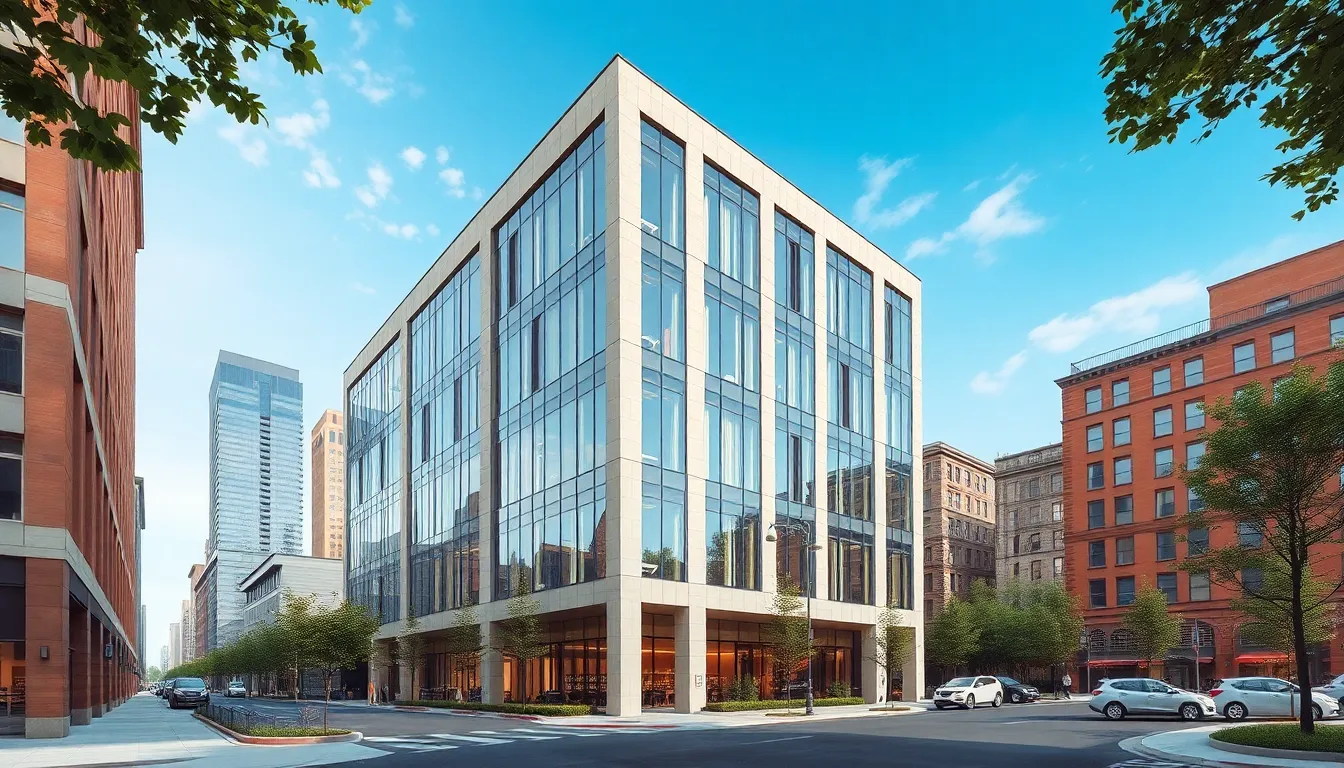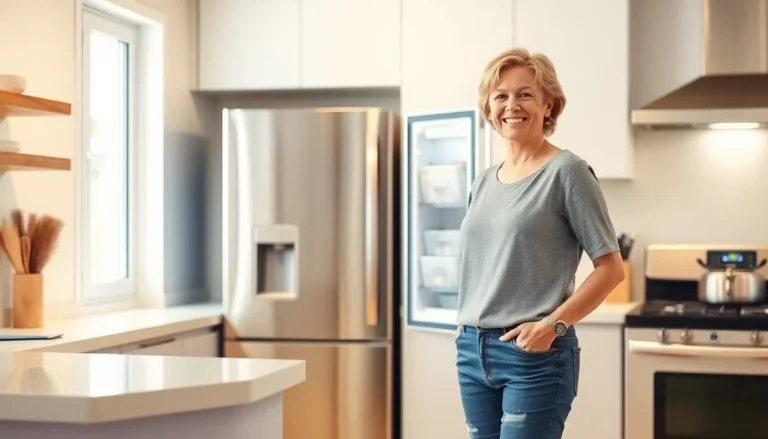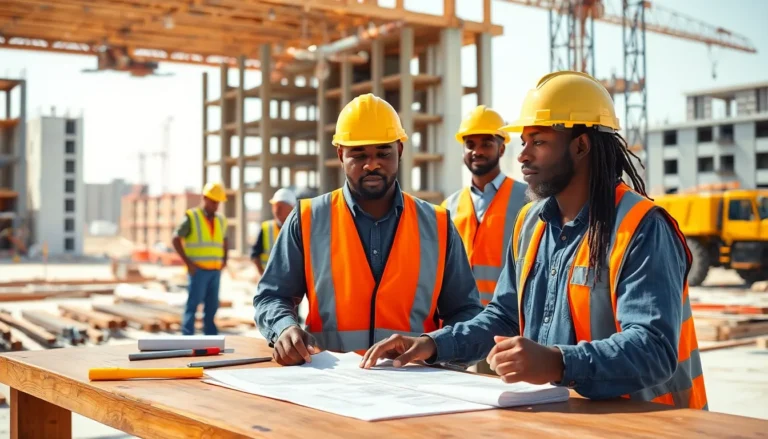Table of Contents
ToggleWhen it comes to building construction, Type 1 structures are the superheroes of the architectural world. With fire-resistant materials and a sturdy design, they’re like the fortified castles of modern times, ready to withstand the elements and any potential disasters. If you’re looking to dive into the world of construction, understanding Type 1 buildings is a must. They’re not just practical; they’re a testament to safety and durability.
Overview of Type 1 Building Construction
Type 1 building construction utilizes non-combustible materials, primarily concrete and steel. These materials enhance fire resistance and provide a high level of structural integrity. Buildings classified under this type often include high-rises and commercial structures, designed to withstand extreme conditions.
Fire safety serves as a core element in Type 1 designs. With the ability to resist flames for extended periods, these structures aim to protect occupants and enable safe evacuation. Engineers incorporate advanced techniques to improve resilience against seismic activity and other environmental challenges.
Height is a defining characteristic of Type 1 buildings. Many exceed five stories, leveraging steel frames for structural support. Such designs not only allow for more floors but also possess increased stability compared to other building types.
A focus on energy efficiency often accompanies Type 1 construction. Incorporating modern technologies enhances insulation and reduces energy consumption. These advancements result in lower operational costs and environmental impact.
Cost factors play a role in the construction process. While initial investments may be higher due to material selection and design complexity, long-term benefits from durability and safety outweigh upfront expenditures. Stakeholders understand the value of investing in such resilient structures.
Urban environments frequently feature Type 1 buildings due to zoning regulations favoring fire-resistant designs. Communities benefit from increased safety and reduced risk of catastrophic events. Architectural innovation further enables the incorporation of contemporary aesthetics within this robust framework.
Key Features of Type 1 Construction

Type 1 buildings showcase a blend of innovative design and practical safety features. Their characteristics make them a popular choice for urban environments.
Fire Resistance
Fire resistance defines Type 1 construction. Non-combustible materials, such as concrete and steel, provide substantial protection against flames. During emergencies, these materials allow for efficient evacuation without compromising safety. Advanced fireproofing techniques enhance the structural integrity of walls and ceilings, minimizing damage during a fire. Moreover, building codes often require stringent fire safety measures, ensuring these structures meet high standards. Overall, Type 1 buildings offer a formidable defense against fire hazards.
Material Selection
Material selection is critical in Type 1 construction. Concrete forms the backbone of these structures, delivering strength and durability. Steel frames offer additional support, allowing for taller buildings with more stability. Additionally, manufacturers incorporate advanced insulation materials, enhancing energy efficiency. Reduced energy consumption leads to lower operational costs over time. The careful choice of materials also contributes to the aesthetic appeal of these buildings, aligning with modern architectural trends. Each element in the construction process reflects a commitment to safety and sustainability.
Advantages of Type 1 Building Construction
Type 1 building construction offers outstanding benefits, particularly in safety and cost-efficiency. Its design incorporates various features that enhance resilience and financial advantages.
Safety Aspects
Safety measures in Type 1 construction stand out due to their non-combustible materials like concrete and steel. These materials significantly reduce fire risks, safeguarding occupants and adjacent properties. Fire-rated walls and ceilings enhance structural integrity during emergencies. Advanced fireproofing techniques make these buildings less susceptible to severe damage during a blaze. Emergency evacuation routes are meticulously planned to allow for safe exits, emphasizing the architectural focus on occupant safety. This emphasis on fire safety makes Type 1 structures a preferred choice in urban settings where high pedestrian traffic frequently occurs.
Insurance Benefits
Type 1 buildings often attract lower insurance premiums due to their fire-resistant properties. Insurers recognize the reduced risk associated with non-combustible materials, translating to significant savings for property owners. Lower claims rates correlate strongly with these safe structures, prompting insurers to offer competitive rates. Enhanced safety features also facilitate faster inspections and approvals, further streamlining the process. Property owners can expect fewer incidents, allowing for minimal disruption to operations. Overall, the insurance benefits contribute to the long-term financial viability of Type 1 buildings, reinforcing their attractiveness for investment.
Disadvantages of Type 1 Building Construction
Type 1 building construction, despite its numerous advantages, presents specific disadvantages worth considering.
Cost Considerations
Costs associated with Type 1 construction often exceed traditional building methods. High expenses arise from using non-combustible materials like concrete and steel. Less availability of these materials can inflate prices. Labor costs may also increase due to the complexity of construction techniques. Initial investments for advanced fireproofing and insulation contribute further to the overall budget. Property owners must account for these higher upfront costs when considering Type 1 structures.
Design Limitations
Design limitations frequently appear in Type 1 construction. Architects face constraints when incorporating aesthetic elements due to the rigid nature of materials like concrete and steel. Height restrictions may also pose challenges in certain areas, affecting the overall design approach. Flexibility in layout often suffers because of stringent fire safety regulations. Consequently, these limitations can impact the appeal and functionality of the building, making it less attractive for some developers.
Type 1 building construction stands out for its exceptional fire resistance and structural integrity. This method prioritizes safety and durability making it a top choice for urban environments. While the initial costs may be higher due to the use of non-combustible materials and advanced techniques the long-term benefits often outweigh these expenses. Enhanced safety features not only protect occupants but also lead to lower insurance premiums. As cities continue to evolve the demand for resilient and secure structures will likely keep Type 1 buildings at the forefront of modern construction. Their blend of safety sustainability and architectural innovation positions them as a wise investment for the future.







